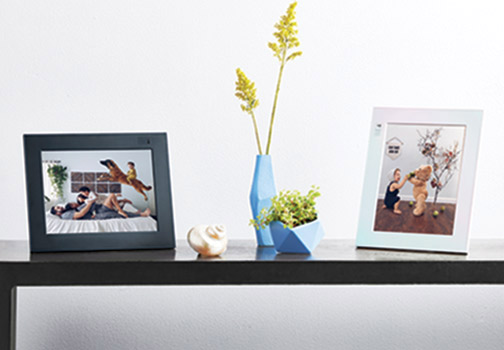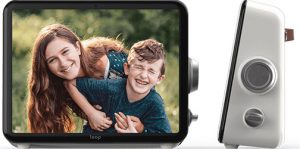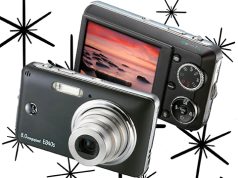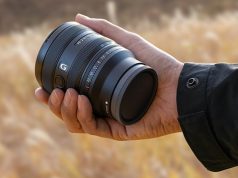
Digital photo frames have been around for a while. We got tired of the first generation in the 1990s, while the second generation of Internet-connected frames a decade later wasn’t compelling enough for most of us to keep using them.
Why have yet another device to clutter our shelves or counters if we could already easily view our photos on our phone, computer and iPad—or connect any of those to our TV to view them on a large screen?
Recently a third generation of digital frames have come to market that offer a variety of innovations targeting specific rather than general use cases. While there is no guarantee that this new generation will succeed, their innovative approaches show more promise than the devices we saw in the past.
Potential for Today’s Digital Photo Frames
Why might this third generation have a chance to succeed? Before we go into the specific innovations being pursued, I’d like to point out there are also more general reasons why digital frames might have a genuine chance to succeed today.
First, the web-based albums or galleries provided by social media and photo cloud storage vendors are losing appeal. They were long thought of as safe and private solutions for aggregating one’s photos and accessing them from any web-connected device. However, consumers are increasingly concerned about security and privacy. Much-publicized data leaks have contributed to this. A growing awareness of the possible privacy implications of face and image recognition technologies applied to cloud-stored photos hasn’t helped either. Many consumers are looking for more private photo-sharing alternatives. 
At the same time, consumers are starting to appreciate the benefits of digital devices, such as Alexa and Google Home, placed inside one’s home that make it a tad easier to do more or less the same tasks their smartphones can. Having a convenient dedicated anytime photo-viewing device in one’s home has become more imaginable than it was before the Alexa and Google Home era. (In fact, both devices also offer versions that can display photos, Amazon Echo Show and Google Home Hub.)
While important, neither reason, in my mind, is sufficiently compelling to trigger a comeback of digital photo frames. But there is more. Unlike previous generations, today’s photo frames cater to very specific use cases and user types. Call it the long tail of photo frame benefits.
Here are six innovative Digital Photo Frame 3.0 examples that leverage the re-appreciation of in-home devices catering to those concerned about privacy and security. Caveat: some of these frames are so popular that several are on back order!
Loop
Loop is a family visual communication device that rides the waves of today’s fascination with anything retro (think vinyl records or Polaroid/Instax print cameras). The device resembles a radio by featuring two knobs as the main interface. It is promoted through multiple unit pack pricing, to encourage consumers to not only buy a unit for themselves but also give one to another family member, such as parents or grandparents. This way, Loop owners can remotely share their photos or videos with each other and communicate through Skype-like video calls.

Its key features include: a retro device with a unique radio-like interface; channels for remote content streams; and video calls, leveraging the device’s microphone and camera.
Collaborating Loop owners can create their own group channels, which are akin to shared albums. These channels may also include content sources besides private photos and videos, such as YouTube Channels or other streaming content. Users can set up and populate these channels through Loop’s iPhone app.
Joy
Joy offers a touch interface for its digital frame/photo album. It is, in essence, a large tablet with a stand (which doubles as a wireless charger). The company’s focus is to empower its users to view curated photo collections, whether the user owns a Joy device or not. Joy albums can also be forwarded by e-mail for viewing on a smartphone or computer.
Its key features are: a tablet that doubles as a photo frame; viewing slideshows and manual browsing may occur on Joy or other devices; a touch interface.

Joy device owners can view slideshows as a typical photo frame placed on a shelf or counter. Or they can pick it up and use it as a tablet while comfortably seated next to their loved ones on the couch. The latter viewing experience is more like browsing a printed photo book; the Joy tablet actually has a center ridge on the back, akin to a book spine.
Why not just use your iPad or Android tablet to view your photos this way? Founder Alan Chan stresses that a single-purpose viewing device doesn’t trigger the usual e-mail or notification distractions we might witness when viewing photos on our phone or tablet.
In addition, Joy’s 13.3-inch Full HD display offers a much more immersive experience than feasible on phones and most tablets. Finally, the Joy frame doesn’t contain one’s private info. So users can feel more comfortable passing their device on to others to view their albums.
Aura
High design meets cutting-edge tech with Aura frames. This digital photo frame 3.0 showcases favorite memories that are often forgotten in a camera roll. No SD card or USB connection is needed; with Aura, all photos are uploaded through the Aura Frames app. Aura frame users can snap and share photos to frames anywhere in the world. Moreover, the frame provides unlimited storage.
This innovative device, which comes in three versions, adds gesture control to the mix. Not in the mood for that photo? Don’t have the app nearby? Users can change photos with the wave of a hand. Love a photo? They can just swipe to “heart” and let the photographer know.

Key features include: compatible with iPhone/Android devices; works with Google Assistant and Alexa; facial recognition lets Aura create collections with photos of people (and pets!); energy conscious with an auto-dimming feature and auto-sleep setting.
Once photo collections are created, users can choose a person or pet they want to see and Aura will display their best photos, taking care to skip low-resolution or duplicate photos. Aura displays photos in Ultra HD 2,048×1,536 resolution.
Skylight
Skylight is a touch-screen photo frame like Joy. Moreover, it is in some ways also reminiscent of Loop’s retro approach by offering a minimalistic interface for remotely adding photos to the device simply through e-mail. Children or grandchildren can easily add photos, videos or e-mail messages to grandma’s Skylight frame. Grandma can then swipe, delete, pause and click on the thank you button. That’s all there is to it.
Key features are: a single focus on simplicity; remote upload through e-mail via Wi-Fi; visual notification when new photos arrive.

Skylight frames could also be used in other settings. For example, wedding guests might give the bride and groom a Skylight frame as a present and ask the wedding guests to e-mail any photos they took during the wedding to the device. They can automatically create a crowd-sourced wedding album on the couple’s Skylight frame without the collaborators needing to install an app or learn how to upload the photos.
Nixplay
While other digital frame companies are relatively early stage start-ups, Nixplay has been selling digital frames for 10 years. The company has sold 1.5M devices to date and still sells a range of non-Wi-Fi 1.0 frames in addition to its lineup of Internet-connected frames. Users can remotely load photos and videos onto the frames through a smartphone app or by e-mailing them to the device.
Nixplay’s smartphone app engages with the Nixplay Cloud—Nixplay’s photo/video storage environment that can be dynamically linked to one’s photo collections on Google Photos, Dropbox and various social media networks. Users can control the display through their smartphone app, a remote control and, recently added, an Alexa smart speaker by using voice commands.

Nixplay models feature: dynamic connection with Google Photos and other cloud services; Alexa integration to enable voice commands; a new video-focused frame with robust audio speakers.
The company’s latest frame, the recently announced Nixplay Seedwave, specifically caters to video playback. It provides robust audio through two 5-watt speakers featuring dedicated bass and audio amplifiers. The Bluetooth-enabled speakers can also provide audio playback from one’s phone or other devices.
Framen
Rather than a self-standing device or a tablet, this German start-up offers oversized digital frames (14.4×22.6 inches). They can stand by themselves or be hung to serve as wall décor. Its Full HD 1,920×1,080 Framen Player device comes with Wi-Fi and motion detection to go into sleep mode if it can’t detect activity in the room.
That’s not all. Framen’s vision is to become the “Spotify for photos.” Its smartphone app offers more than 100K playlists of curated stock photos. In other words: by intermingling personal photo playlists with those offered by Framen, users won’t get tired of viewing the same looped birthday pictures over again.

Framen’s key features are: an oversized display that functions as wall décor; an app enables streaming of personal and curated stock photos; multi-device photo streaming through one app, especially relevant to companies in multiple locations.
What if you want to view photos in more than one place? Or enable multiple family members to view the same photos? Framen is viewing-device agnostic, according to CEO Dmitri Gärtner. “We’re most of all a streaming photography company, not a display device company.”
Via a nifty add-on product, the Framen TV Stick, which plugs into any TV or monitor’s HDMI port, the Framen app streams preferred photo playlists to all a user’s Framen TV Stick-enabled TVs and also oversized Framen Players. This makes sense for households with multiple TVs/displays. It also works for companies, such as franchises, that wish to show the same corporate-approved photos.
Through a single app, one administrator selects the playlists for immediate display anywhere in the world. Thusly, the Framen TV Stick enables multi-screen display from a single user’s smartphone app, even if the TVs or display devices are on the other side of the globe.
Devils in the Details
Will the third generation of digital frames have a chance this time around? Frankly, the devil is very much in the details. As mentioned earlier, if these details are indeed in place and successfully cater to very specific use cases and user types, digital frames 3.0 do have a fair chance to succeed.
Consumers have come to appreciate the convenience of always-on devices in their homes that make their lives easier and more enjoyable. This is especially true if they feel their family photos are stored securely without privacy concerns.
Still, many alternative viewing devices exist. Moreover, the proliferation of screen-enabled smart home and communication devices from the likes of Google, Amazon and Facebook could pose a competitive threat. We’ll keep you posted!






Yes, the gen 3 picture frame will be smarter and easier to connect people not so tech savvy in a secure way.
Built-in AI technology to auto-organize photos, create playlist, custom view experience will be great feature to update.